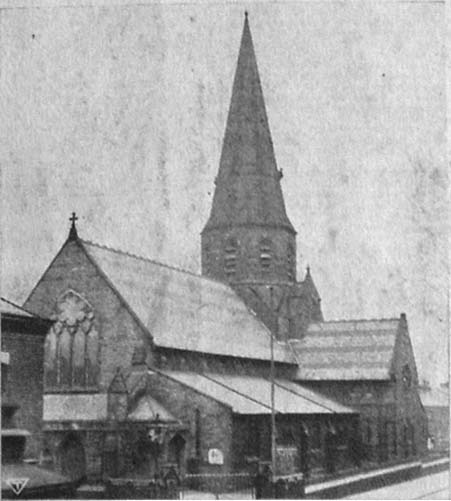 |
The Church of St James the Apostle, Little Bolton |
 |
 | |
From The Bolton Journal and Guardian, Friday, September 10, 1937, reproduced here by the kind permission of the Bolton News.
The name of the Rev. T.T. Berger will not convey anything to the modern generation, but it is indelibly inscribed on the records of the townís early educational administration. In his time this vicar of St. Jamesís Church, Waterloo-st., was one of Boltonís notabilities.
The old school Board knew him well indeed Ė perhaps some members thought they knew him far too well. He was, for one thing, a man of decided views, who liked to expound them in the hope of winning others over to his point of view. Whether or not he adopted the right methods is a matter of opinion.
On one occasion, for instance, he established a record for the School Board by speaking for six hours. He was recognized as the leader of the Denominational party on the Board, and his verbal encounters with Mr. William Abbatt, the unsectarian leader, were a feature of most of the Boardís meetings for a long time.
Mr Berger was also a profound student of Biblical science and a lecturer on Church topics with far more than a local reputation.
His reputation in these two spheres has overshadowed to a large extent in some minds the value of his work as a curer of souls at St. Jamesís. But the fact remains that during the 34 years that he was in this district he did a great amount of good work, and his departure was sincerely regretted.
It would not be too much to say, in fact, that he made St. Jamesís.
He was an assistant curate to the Rev. Neville Jones when, in 1862, it was decided that the Waterloo-st. district of St. Georgeís parish ought to be separated from the parent parish.
This area has grown rapidly with such enterprises as Dobsons and Barlow, Musgrave and Sons, and Knowles and Sons in the vicinity, and there was an undoubted need for a church to serve the locality.
The movement began when Mr. John Barrow, of Bolton, bequeathed £2,000 and a suitable site for a church. Mr. Berger was selected to take charge of the new district and a school was built which was utilized for both day and Sunday purposes.
Mr. Berger put his heart and soul into the work of building up the new parish and he had the satisfaction of seeing his zeal and well-directed efforts rewarded by the growth in the number of his helpers and followers.
Soon the school was too small to meet the requirements of the parish, and in 1867 it was decided that the time was ripe for the building of the new church.
The foundation stone was laid by Canon Powell on May 25th, 1867, and the church was completed in the same year, although it was not consecrated until May, 1871, because Mr. Berger and his fellow-workers found it impossible to clear off the debt that had been incurred.
Although it was a working-class parish they had, however, done extremely well, for they had raised £18,000 towards the total cost of £20,000. The remainder of the debt was cleared off, thanks to the help, among others, of Messrs. Dobson and Barlows and Messrs. John Musgrave and Sons.
Incidentally the bulk of the money for the church had been raised in small amounts.
The church was consecrated on May 18th, 1871, by Dr. Fraser, Bishop of Manchester.
St. Jamesís is built in the early English style of architecture, with well-proportioned chancel, nave and north and south aisles. The outstanding feature of the church is the unusual central tower, the spire of which is 150ft. high. The architects were Messrs. Medland and Henry Taylor, of Manchester.
The architect for the schools, which were built in 1872, was Mr. R.K. Freeman.
In 1896 Mr. Berger decided to leave Bolton, and exchanged livings with an Irishman in Norfolk named Fitzmaurice, whose extraordinary actions had such an effect on the parish that the local church leaders intervened, and drastic action was the result. It took a long time and great deal of hard work before the life of the church was restored to its full vigour again.
The Revs. J.O. Coleman and A.W. Nye are two vicars who did much to put St. Jamesís back on a firm footing.
The prevent vicar is the Rev. A. Cresswell, who was appointed in 1936. He is a brother of the Rev. T. Cresswell, vicar of Lever Bridge.
| Bolton Home & Contents | ©Lancashire OnLine Parish Clerks | Lancashire Home |